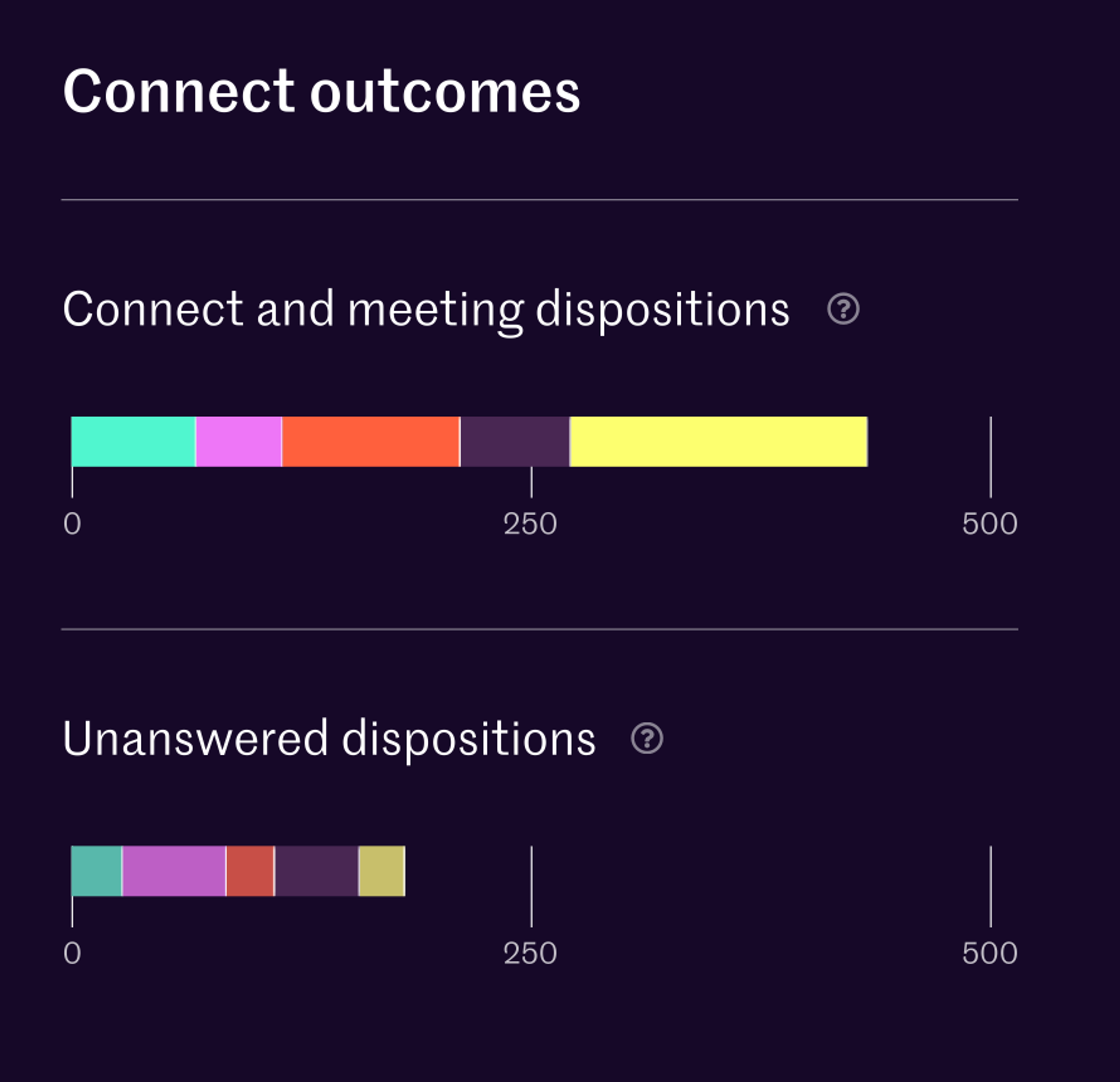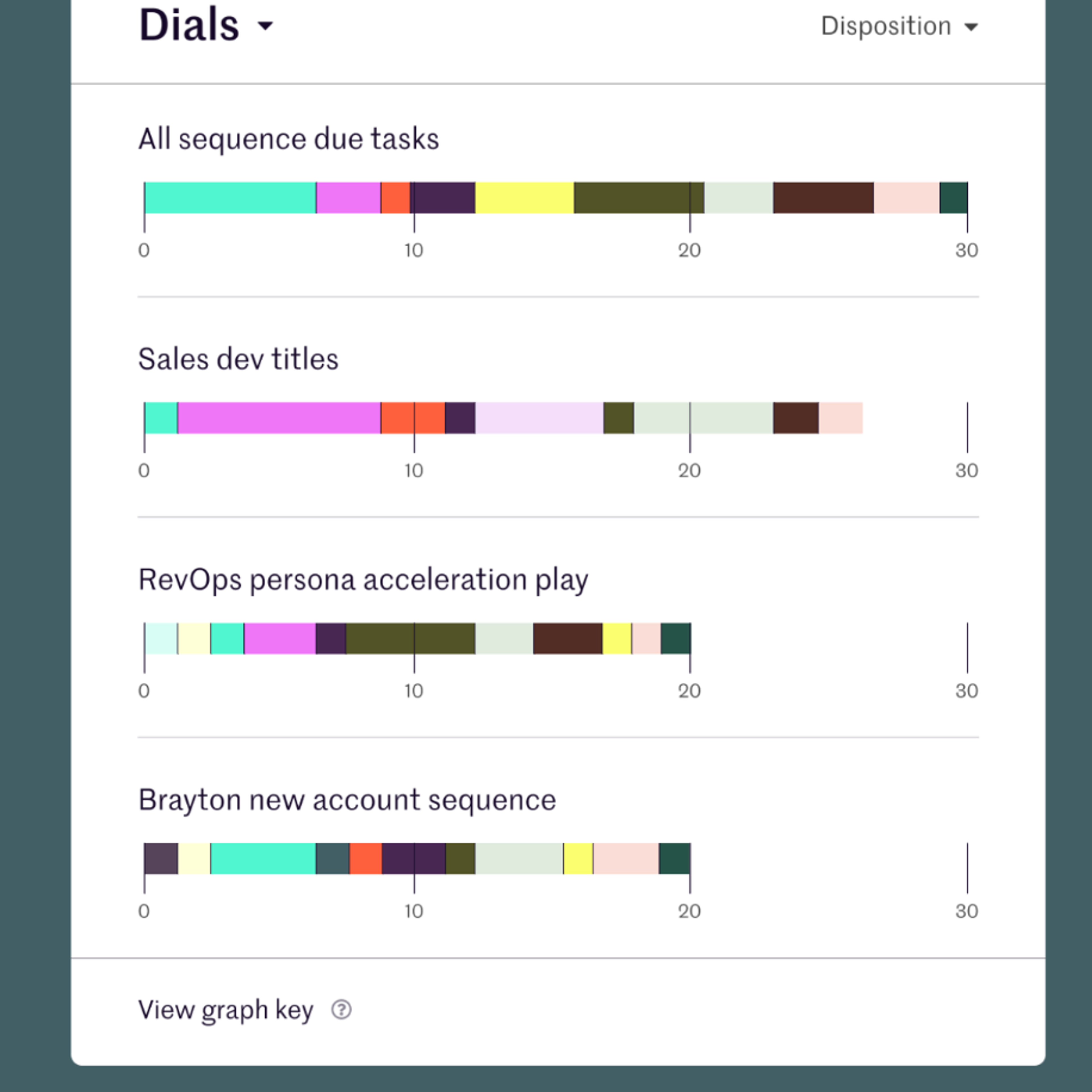Managing Remote Sales Teams: 9 Ways To Keep Reps Building Pipeline


A recent study reveals that 71% of sales reps now work in a hybrid setup, with approximately 10% working fully remotely*. Given that 70% of managers plan to expand their SDR teams in the next 12 months, many of these new hires will likely be working from home.
This presents new challenges for sales leaders, who need effective strategies to keep their team motivated and performing well. This is especially true regarding oversight and relationship-building with remote sales reps.
However, there are tactics you can use to motivate team members, facilitate skill development, and help them meet their quotas—without resorting to micromanaging.
In this post, we’ll discuss nine management techniques leaders can use to keep their remote reps growing pipeline.
Improve your remote sales team’s performance
Offer comprehensive individual and group sales training in real-time with Orum.
Request a demo today
1. Set clear expectations and KPIs
If you want your team to perform well and meet their sales quotas, they need to understand what you expect from them. Setting transparent expectations is crucial to keeping team members on the same page, promoting internal accountability, and motivating them to hit their numbers on a daily basis.
Being specific about your expectations involves sharing the performance metrics and quotas you’re tracking. For example, you might expect SDRs to send a certain number of outreach messages to ensure they’re investing their time wisely or that they contribute to a certain number of booked meetings.
The key performance indicators (KPIs) you track can vary depending on your sales processes and business goals, but here are some standard pipeline-centered metrics:
- Connect rate: The percentage of outbound sales attempts (calls, emails, etc.) that successfully result in direct contact with a prospect.
- Number of conversations: The total count of meaningful exchanges or dialogues with prospects, either through phone calls, meetings, or digital channels.
- Email open rate: The percentage of recipients who open an email, often used to measure the effectiveness of email subject lines and overall engagement.
- Meetings booked: The number of scheduled meetings or appointments with prospects as a result of sales outreach or marketing efforts.
- Closed-won deals: The total number of sales opportunities that have been successfully converted into finalized, revenue-generating agreements or contracts.
In our 2024 State of Sales Development Report, respondents listed the following as the most important KPIs for SDRs:
- Meetings booked (61%)
- Qualified meetings (44%)
- Prospects connected with (21%)
- Activity goals (19%)
You can track these metrics for your entire team and individual team members. Doing so promotes accountability and helps you identify potential opportunities for skill development and training needs.
For example, you might notice one of your reps consistently outperforms their quotas on the number of meetings booked, but they struggle to close deals further down the line. They may benefit from practice around closing techniques or need training to ensure they’re targeting the right audience segments.
2. Implement regular check-ins and accountability systems
Remote employees benefit from regular check-ins and accountability systems, especially since you aren’t all working together in person.
Weekly or bi-weekly one-on-one meetings let you:
- Review each rep’s performance and their progress towards weekly or monthly quotas
- Identify potential areas for improvement, including opportunities for continued training
- Discuss challenges impacting the sales rep and how you can help overcome them
- Reinforce expectations
It’s also essential to establish a consistent rhythm of reporting progress. In many cases, sales leaders may also use daily, weekly, or monthly pipeline updates to stay in the loop. Create transparent processes using your tech stack, which should look something like this:
- Using tools like CRM dashboards to monitor the number of outbound emails or calls
- Leveraging sales tracking software to monitor pipeline generation and projected deal value
- Incorporating communication methods like Zoom calls or Slack channels for ongoing reports and regular check-ins
- Implementing AI-powered live conversation intelligence with tools like Orum to better track seller performance and deal progress

3. Foster a collaborative remote work culture
Facilitating team collaboration when individual reps are working from different locations—and potentially different time zones—requires intentional effort from sales leaders. Yet, it’s essential, as team members can help inspire each other to meet quotas and generate more pipeline overall.
Use the following strategies to promote a collaborative culture within your team:
- Hold regular team video calls to discuss goals, network, and collaborate
- Create chat groups through platforms like Slack to encourage relationship-building, including for work topics (like “general questions”) and for “fun” topics (like launching a workplace fantasy football league)
- Dial as a team with Orum’s Salesfloor, which enables reps to provide peer-to-peer feedback, practice sales activities like role-playing, and implement new best practices

It's also important to celebrate the accomplishments of your virtual sales team, including big and small wins. Remote salespeople want to feel valued and engaged, just like in-office staff. So, giving public and private shout-outs when an employee hits their personal best can foster engagement and healthy competition across the team.
4. Offer continuous training and development
Sales techniques, technology, and best practices are always changing. Offering remote training sessions on soft skills and sales strategy (including closing and de-escalation techniques) ensures your team has the tools they need to generate more pipeline.
Team-wide and individual training is critical. Departmental training can promote team building and ensure that your rep’s skills and knowledge are up-to-date, while personalized coaching can support professional training and address individual reps' potential weaknesses.
Use this training to update your reps on industry trends, competitor analysis, and product knowledge. For example, you can hold dedicated training when implementing new sales tools to decrease ramp-up time with automation or provide instruction on sales processes.
5. Leverage data and analytics tools
Reps and sales leaders alike should regularly analyze their sales data to assess the following:
- Progress toward daily, weekly, and monthly sales goals
- Time management, including how much time is spent on different types of tasks
- Current pipeline development and deal projections
Encourage your sales reps to analyze their performance data to proactively identify trends in their performance and potential obstacles they may need support with. You should also track their performance data to support them in this effort and assess potential growth opportunities. Using these data-driven insights, you can refine remote selling tactics and pipeline-building strategies.
Considering all metrics when reviewing a sales rep’s performance is important. For example, one SDR might send fewer messages than others, but they book more qualified meetings. This may be because they’re spending more time on research. While a sales leader might initially only see the lower outreach metrics, advanced analytics platforms can help you see the big picture and advise your team accordingly.

Regular performance reviews—and those regular weekly or biweekly check-ins—can help managers tailor coaching and development efforts.
6. Create fun incentives
While many top-performing sales professionals take great pride in doing their job well, fun incentives can help sweeten the deal, improve team-building, and boost employee engagement rates.
Fun incentives can include:
- Implementing virtual leaderboards to foster some friendly competition
- Offering performance-based bonuses, including both cash and non-cash bonuses like extra paid time off
- Team-based challenges to boost sales numbers and engagement together, with the opportunity to earn rewards together
Align your incentives with your pipeline growth goals. If you want to motivate SDRs to find quality leads, for example, you’d likely want to offer incentives based on the number of qualified meetings booked instead of the number of cold calls made.
7. Encourage self-discipline and time management
Sales professionals need strong time management skills, which is why so many leaders intentionally look for “self-starters” when hiring. You can support your team and help them hit their sales goals by providing tools and frameworks to better organize their daily activities.
Some examples include:
- Teaching your team time-blocking techniques to help them organize their day into researching, prospecting, and active outreach
- Discussing prioritization strategies to help sales reps identify high-value or high-intent leads
- Communicating daily goals to support pipeline development
- Offering access to time-tracking tools that can help your staff understand how their time is spent (and potentially how to use their time more efficiently)
8. Offer flexibility with structure
22% of employees claim flexibility is the biggest benefit of a remote work environment, followed by choices of where to live and work*.
As a result, your team may be happier—and thus perform better—when they have some flexibility in their work schedule. Offering flexibility can even prevent burnout and improve employee retention rates.
A flexible work schedule will look different for each sales team. You might let your team have mostly flexible work hours, for example, as long as they’re available for a daily 9 AM stand-up and mandatory team meetings. Others might require team members to be available to respond to messages for three specific hours daily to improve collaboration potential.
Trust your reps with autonomy when possible, but ensure they stay engaged with pipeline-building activities. Again, transparent policies and ongoing accountability check-ins can help you find the right balance for your team.
9. Lead by example
Set the tone for your team by consistently hitting your own sales targets, maintaining a strong work schedule, and prioritizing pipeline-building activities.
Model how to handle setbacks, rejections, and tough days. Be transparent about your sales calls' wins and losses and use both as learning experiences for your team. This can be essential to building trust, especially in remote settings where you may not have as much direct interaction with your staff.
If a deal falls through, for example, you can discuss what potentially went wrong with your sales team. Encourage them to share feedback about what different strategies could have been used or how to better overcome an objection that stopped the deal.
Finally, show your team that resilience is key to keeping a pipeline full and help them bounce back from challenges. Meanwhile, hold yourself accountable to the same standards and possibly metrics you set for your team.
Leverage transparent processes and remote-friendly tools to generate more pipeline
Managing remote sales teams presents additional challenges, but the right strategies, tools, and processes can keep your team on track.
Orum’s Salesfloor is essential for remote teams, providing invaluable learning opportunities. Maropost, for example, uses Orum’s Salesfloor feature to dial calls together and Live Listen to spotlight each other’s calls and improve the team’s pitches. They’ve used Orum for improved analytics, coaching, and culture-building, and to great success—they’ve seen increases in their connect rates, connect-to-conversion rates, and overall conversion rates.
By prioritizing clear communication, systemized processes, and advanced technology to provide ongoing training and sales coaching, you can keep your sales team productive and your pipeline growing.
Improve team performance with remote coaching through Orum
Track key performance metrics, provide clear feedback, and help your sales team build your pipeline
Request a demo today
Frequently asked questions about managing remote sales teams
What are some tips for managing remote sales teams?
To better manage remote sales teams, you can implement the following strategies:
- Set clear expectations and KPIs.
- Implement regular check-ins and accountability systems.
- Foster a collaborative remote work culture.
- Offer continuous training and development.
- Leverage data and analytics tools.
- Creative fun incentives.
- Encourage self-discipline and time management.
- Offer flexibility with structure.
- Lead by example.
How do you manage a remote team?
Remote sales team management requires clear communication, transparent expectations, and advanced sales technology to help you track sales rep progress, identify and facilitate training opportunities, and foster collaboration across your team. Leveraging remote-centered strategies like regular check-ins and ongoing training is imperative.
Sources
*HubSpot 2024 State of Sales Report
*Buffer 2023 State of Remote Work





